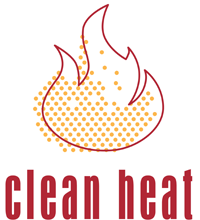Burn right
As a renewable fuel, wood can be a good alternative to heating with oil, gas and coal. However, burning wood generates harmful substances such as particulate matter and soot. Particularly in the case of stoves, the actual emission of pollutants is usually much higher than the level stated by the manufacturer.
The way the stove is operated has a great impact: incorrect operation can result in a drastic increase in emissions.
What kind of wood can I use?
- It's best to use wood from sustainably managed forests.
- For pellet stoves: use pellets of the highest quality.
- Ensure that your wood is well ventilated and protected against moisture.
- Make sure the moisture content of the wood is correct (max. 25%). This can be determined with a wood moisture meter from a DIY store. Even dirty or mouldy wood can result in more pollutants being emitted. If the wood is too dry (moisture content below 10%), e.g. if it was stored too long in warm rooms, it will burn too fast. That's why it should spend some time covered up outdoors.
- For optimum combustion, the logs must not be too thick or too thin. They should have a diameter of approx. 6-12 cm and be long enough that they can be stacked with a gap of a few centimetres from the stove wall. Use smaller logs only for lighting the fire.
- Important: Do not burn treated wood or waste! This generates extremely toxic substances, which also settle in your immediate environment.

Lighting the fire
- A lot of combustion air is needed, especially when first lighting the fire. So always fully open all air flaps. Only when combustion is in full swing should the air supply be reduced as indicated in the operating instructions.
- Use professional lighting aids such as wood wool fire starters with wax. Cardboard or paper is not suitable because the ash they generate can hinder the supply of air.
- As a rule, it is recommended that you "light from above", as this causes the upper part of the firebox to heat up more quickly and causes fewer pollutants.

Adding fuel to the fire
- Put more fuel on the fire at the right moment: when the visible yellow flames have nearly gone out and there are still enough embers present (generally about every 30 minutes).
- Make sure that you don't overload the stove and regularly add small amounts of wood. Guideline: 0.15 kg wood per kilowatt of nominal heat output of the stove (see the operating instructions or the type plate).
- Clean combustion requires oxygen: don't throttle the air supply too much. The stove interior should remain bright and have no black soot deposits.
- Caution: open the stove door slowly to avoid that smoke is emitted to your living room.

Maintenance
- Dispose the completely cooled ash in your household waste. Avoid raising dust, so that you don't inhale ash particles that are harmful to health.
- The chimney has to be cleaned regularly. Depending on how often you use your stove, it should be cleaned between one to four times a year, as recommended by the chimney sweep.
- What you yourself can do: regularly check the door seal, the firebox lining and the grate, and if need be, replace any defective parts.



